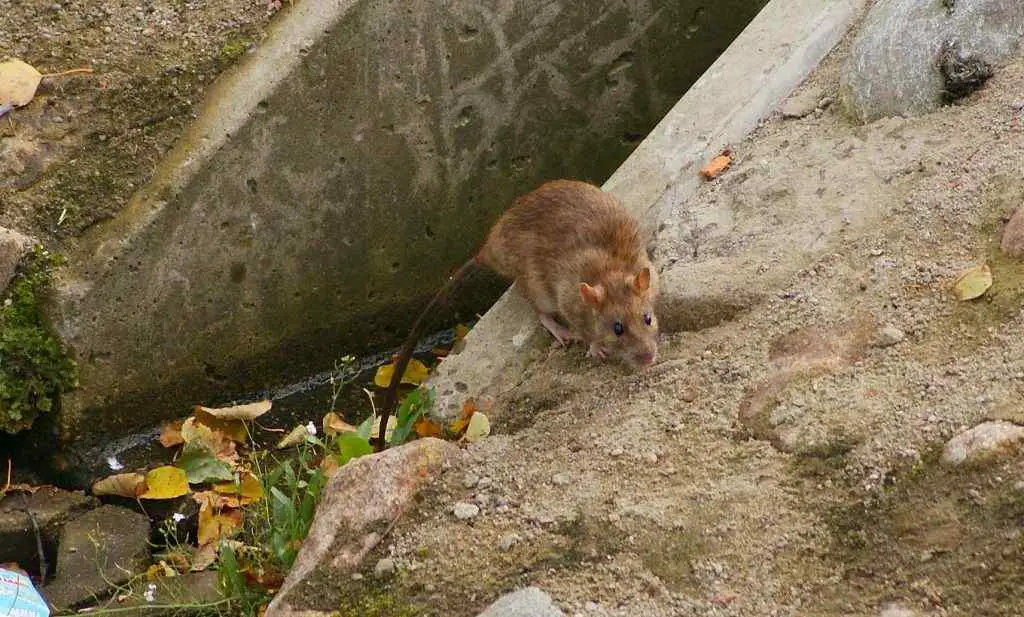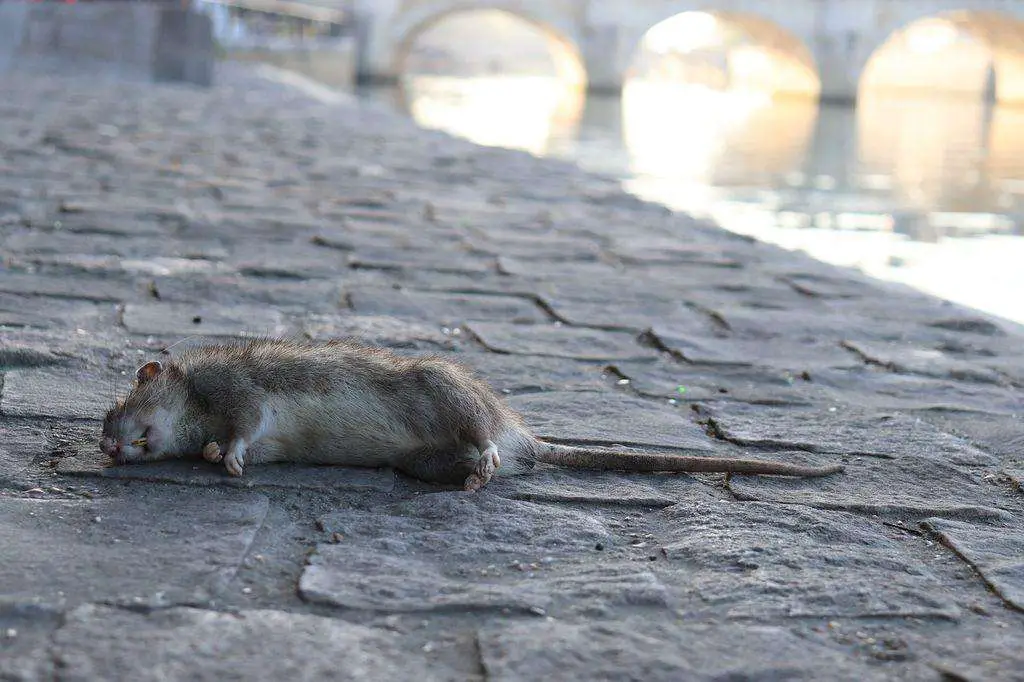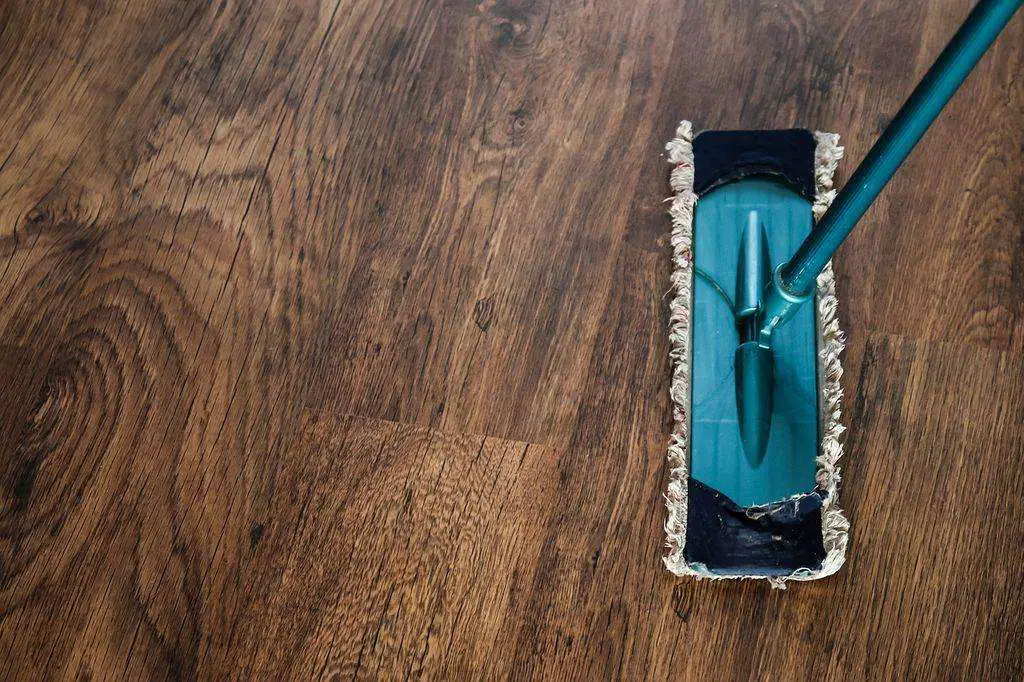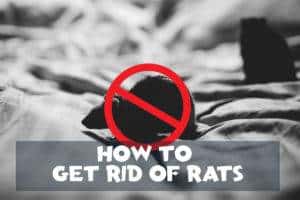If you are looking for ways to get rid of rats, you are at the right place. In this article, I’ll guide you on how to get rid of rats from your house safely and effectively.
To get rid of rats, bait them using low toxic baits approved by EPA. You can also use various traps. The most important key though, is proofing your house so that there are no entry points. Good sanitation and housekeeping practices are important to reduce the chance of infestation. Don’t waste time and money on any repellents.
Continue reading to understand more on how to get rid of rats.
Common Rat Species
The 2 major rat species in the US that often trouble homeowners in the urban setting are brown rat and black rat. They can feed on human food and food waste, damage our property through gnawing, and transmit disease-causing pathogens.
Both brown and black rats live in colonies. They exhibit specific nesting preferences within their environment, seeking places abundant in food, water, and harborage.
The home range of these rats typically extends within a radius of 8 to 30 m (25-100 ft) from their nests, although this can vary depending on site-specific and environmental factors. For instance, rats inhabiting the ceiling of a house where they have easy access to food may travel shorter distance. However, if nearby food sources are scarce, rats may venture up to a kilometer (or several hundred feet) away from their nests in search of food.
While rats are constantly exploring their surroundings, they often display wariness towards new objects or sudden environmental changes. This cautious behavior, termed neophobia, refers to their fear of anything new. Neophobic tendencies are crucial to consider when implementing control programs, as rats may actively avoid traps and bait stations for several days or even weeks until they become accustomed to their presence in their surroundings.
Conversely, if a site undergoes rearrangement or cleanup, everything becomes new to the rats, making them more curious and likely to investigate boxes or examine traps left in place.
Typically nocturnal creatures, rats primarily forage for food during the night, particularly at dusk and before dawn. However, in undisturbed and quiet environments, rats may also venture out during the daytime for foraging purposes. While both brown and black rats may display specific food preferences, they are generally opportunistic eaters, making use of any available food source.
Rats have a substantial appetite, consuming large quantities of food, with an average daily intake ranging from 30 to 70 grams (1-2.5 ounces). They prefer foods rich in carbohydrates and protein, maintaining a balanced diet by consuming a variety of cereal grains, meats, breads, fruits, and vegetables.
In urban areas, rats will scavenge through trash set out for collection and may even feed on American cockroaches in sewer systems. In rural settings, rats may feed on nuts, seeds, smaller mammals, bird eggs, and other available resources.
Both brown and black rats have poor eyesight. They depend heavily on their whiskers and sense of touch to perceive their surroundings.
Brown Rats

Brown rats are also known as the sewer rats or Norway rats. While they can be found in the sewer, they are not from Norway.
Brown rats are not necessarily brown. Due to their behavior, their furs are coated with grease, making them appear black or grey. They can grow up to 10″ in length excluding tail. Their tails are slightly shorter than their body length, and their ears are smaller than black rats’.
Brown rats are good at burrowing, running, climbing and swimming. In the urban environment, brown rats stay in burrows or sewers, and travel through sewage lines and drainage to search for food. They don’t necessarily nest near their food source, and can travel up to a few hundred feet to look for food.
Black Rats

Black rats are also known as the roof rat or ship rats, even though they are not necessarily black. They are smaller than the brown rats, with body length around 5-7″, and a tail slightly longer than their body. Black rats have a relatively big pair of ears compared to brown rats.
In their natural habitat, black rats typically construct their nests in trees. However, in urban environments, they adapt by building nests in various structures such as buildings, often choosing locations like ceilings, roof voids, and wall cavities. It is not uncommon to find black rats nesting within electronic compartments of commercial machines or beneath chillers.
Identifying Rat Activities
It is important to identify where the rats are active and their potential runway so that you can put in the right measures at the right place.
In your search for signs of rats, look for:
- Gnaw marks.
Rats love gnawing to keep their ever-growing incisors short. They gnaw on almost anything including woods, rubbers, plastics, cables, packaging etc. They can make rough holes as big as 2” in diameter from gnawing. - Droppings.
Rat droppings are rod-shaped, about ½ to ¾ inches in length. If the droppings are dried, it is probably an old infestation. Usually, droppings are found at undisturbed places that you rarely use, such as storage areas, attics, underneath cabinets etc.
Rats droppings carry harmful pathogens. They should be cleaned, and the affected area should be disinfected ASAP. Always wear gloves when clearing rat droppings.
Cleaning the droppings also helps you monitor the treatment progress. If there are new droppings after clearing them, the rats are still around. - Urine smell and stain.
Rats use urine to mark their territory. It appears as a dark stain and gives off a terrible smell that will last for a long time.
You should clean and disinfect the urine stain to eliminate any possible disease-causing pathogens. Make sure you wear gloves when doing that.
To remove the foul odor, you can use deodorizer such as Fresh Wave Odor Eliminator. - Smear marks.
Smear marks are grease or dirt accumulating on a surface as the rats walk on the same spot repeatedly. It appears as dark spots along walls and piping that the rats use as their runways.
- Footprints.
You will be able to see footprints if the area is dusty, or on loose sand or soil. Rats have 4 toes on their front feet and 5 toes on their rear feet.
How to Get Rid of Rats
To get rid of the rats in your house, you can search for their nest, poison them or catch them using various traps. You should also rat-proof your house and follow good sanitation practices to prevent rat infestations.
The key challenge in controlling rats is their neophobic behaviors. Rats are afraid of new things. They will not approach newly laid traps or baits until they are familiar with their presence. Hence, you will need to be patient when dealing with rats.
Search for the Nest if You have Black Rat Issues
If you suspect the presence of black rats, it is advisable to locate their nest. Black rats tend to choose quiet and undisturbed areas for nesting, including attics, crawl spaces, wall voids, unused boxes, unvisited corners, and even the electrical compartments of machinery. To identify their nesting spot, you may need to move furniture and utilize ladders.
Once you have located the nest, quickly transfer it into a garbage bag and double-bag it for added safety. To prevent any potential escape, consider placing glue boards as barricades around the nest. These adhesive boards will help capture any rats that may try to flee.
There are several ways to kill the bagged rats, but I’ll leave it to your imagination. However, it is crucial to act promptly, as black rats have the ability to gnaw through bags if given enough time.
For your own protection, remember to wear gloves when handling the rats’ nests, as they can carry disease-causing pathogens. Taking proper precautions is essential to minimize the risk of exposure to any potential health hazards.
Use Rodenticide Baits

Rodenticide bait or rat poison is the most common product used to control rats. If you plan to use bait, make sure you follow all the safety and use instructions on the label! Most rodenticide baits are only allowed for outdoors use.
If you have black rats nesting in your house, be prepared to deal with foul odor from hidden carcasses. The odor of dead rats is unbearable, and can attract other pests like flies.
Rodenticide bait should be kept in a secured tamper-resistant box to prevent consumption by non-target animals such as cats, dogs, kids etc. The bait needs to be secured using the metal rod included in the boxes. This will prevent bait from being moved out or falling out of the bait boxes.
Put the bait boxes outdoors along the rat’s runway, sewer and burrows, preferably out of sight so that curious kids will not play around with it. If possible, label it as “poison” and put down the name of the rodenticide you use. Secure the bait box with long nails or Liquid Nails so that they won’t go missing.
Check the bait boxes weekly and top up the bait if required. It takes about 1 week or more before the rats start to feed on the bait. Continue to top up consumed baits and replace moldy baits until no more feeding is observed.
When using baits, remove all the competing food sources to increase the hit rate.
If you are looking for rodenticide baits, I recommend you to get 1 of the 2 below. Although I prefer anticoagulant-based rodenticide, EPA has restricted over the counter sale of anticoagulant rodenticide so I wouldn’t list them here.
Selontra
If you prefer a safer option, consider getting Selontra. It contains cholecalciferol, more commonly known as vitamin D3. Rats are killed by ingesting high doses of cholecalciferol. This is a good example that shows anything can be poisonous if the dosage is high enough!
The only issue with Selontra is the speed of control. It takes about twice as much time or more to clear a rats infestation using Selontra than other products.
Fastrac All-Weather Blox
If you want to achieve the result faster, you can consider Fastrac All-Weather Blox. It contains a neurotoxin that kills rats within 1-2 days in 1 feeding.
The same toxin will kill humans and pets if enough bait is consumed. Luckily, the bait contains denatonium benzoate, the bitterest chemical compound on earth to deter accidental feeding by humans. Rats are not as sensitive to bitterness as humans and other animals, so they will still feed on the bait.
Catching the Rats with Traps
To catch rats, you need traps. Traps are more effective if they are baited. You can use peanut butter, chocolate, fish bones, chicken bones or dried squid to lure the rats.
For baited trapping to be effective, you need to remove all competing sources of food for rats. Keep other food in secure containers so that the rats can only go to your trap for food.
Place the traps around locations where you found rats’ activities such as droppings and gnaw marks, and potential runways.
Snap Trap
Snap traps are a cheap and humane way to kill rats. However, it can be dangerous if not handled properly because it can break your finger. Snap traps should be baited and placed at places inaccessible by pets or kids such as in the ceiling, underneath cabinets.
Make sure you buy the right snap trap – the one for rats not mice! Snap traps for rats have a stronger kill force to ensure the rats are killed.
Snap traps come in two distinct designs: serrated and non-serrated. The serrated design aims to ensure that rats are either killed outright or sustain significant injuries. On the other hand, the non-serrated variety allows rats to escape if only their limb is trapped. It is often considered more humane than the serrated version.
Goodnature® A24 Rat Trap
If your rat issues are mainly outdoors, consider using Goodnature® A24 Rat Trap. It attracts rats through a lure. When the rat pokes its head into the trap, the CO2 powered-trap fires a rod onto its head to kill the rat immediately.
Goodnature® A24 Rat Trap is a multi-kill trap and it can kill up to 24 rats with a single refill. You can even hook it up to your phone for monitoring.
Zapper
Zappers are effective in killing rats but I don’t fancy zapper because it is difficult to clean. When the rats are zapped, they may lose control of their bladder, and urinate. I am not sure about you, but I don’t want to clean that.
Zapper can also be dangerous if you have kids at home. It doesn’t discriminate between rats and humans.
Glue Board
Glue board is a cheap but least humane option for getting rid of rats. Rats trapped on glue will not die immediately. They may attempt to bite off their glued limbs to escape, but finally succumb to death from starvation and dehydration.
Glue boards may trap other non-target such as pets, birds and even children. Hence, glue boards should be placed indoors, somewhere hidden.
If the rats are big enough, or if they are wet or too greasy, they can escape the glue.
Live Catch Traps
I don’t recommend using live catch traps to catch rats because you will then have to kill the rats by yourself. Wild rats are quite aggressive, and can escape if mishandled.
If you decide to use live catch traps like cages, do not release the rats. Unlike mice, rats can travel very far. They can also cause damage to the local ecosystem by destroying the roots of trees, eating seeds of plants and bird eggs.
How to Prevent Rats
Rats can be in your house for food and/or shelter. To prevent rats infestation, we need to target 2 areas: proofing and sanitation.
Sealing Entry Points
The easiest way to prevent rats infestation is to stop them from coming in the first place. If you can seal off all the entry points, you won’t have rat issues.
Look for gaps and holes around your house which can be utilized by rats. Adult rats can squeeze in through gaps as small as ½”. Two common intrusion points are where utility lines and pipes enter the building, and door gaps.
Seal the potential entry points using steel fabric, caulking, or wire mesh. Don’t use tapes, silicon or woods, because rats can chew through them.
Use heavy duty rubber or metal door sweeps, such as those sold by Xcluder, instead of plastic or wooden ones on all your doors leading to the externals. Rats can bite through low quality door sweeps and invade your home.
Lastly, trim your trees so that the branches are at least 5 feet away from your building. This will prevent black rats from jumping into your house through the trees.
Xcluder® Fill Fabric
Xcluder® Fill Fabric is a “clean” alternative to caulking. It is made of steel wool. The sharp steel wool hurts rats’ mouths when they attempt to gnaw on it.
The application of Xcluder® Fill Fabric is very simple (refer to video below). You only need to cut it into the desired size to fill up gaps where rats can enter buildings. You don’t have to deal with caulking, which can be messy if you don’t have prior experience doing it.
Caulking Foam
To effectively seal rat entry points, you can utilize any caulking foam that suits your preference. However, it’s important to note that rats have the capability to chew through caulking material.
To reinforce the seal, it is recommended to insert a wire mesh into the gap before applying the caulking. This additional layer acts as a deterrent and provides added protection against rat intrusion.
Good Housekeeping and Sanitation Practices

Rats go into your house for either food or shelter. To make your house less attractive to rats, you need to improve your housekeeping and sanitation practices.
Managing food wastes
Clear the food waste in the sink. Food waste should be kept in a rubbish bin with a lid. Bagged garbage should be thrown into the trash bin, not placed outside the trash bin because rats can bite through the plastic bags.
Safe keep your food
You should also keep all your food (and pet food) in airtight containers or in closed cabinets with no gaps. Rats can easily bite through plastics bgas. By not leaving any food exposed, the rats will hate to stay in your house.
Reduce clutter
Reducing clutter makes it more difficult for the rats to find a place to nest. It also makes it easier for you to detect the rats.
Clean up pet food
If you have pets, remove all leftover pet food and drinks at night and clean off any spillage. This will reduce the rats’ access to food.
Fix leaking pipes and condensation issue
Rats require 1-2 ounces of water daily to survive. Make your home less attractive by reducing their access to water.
Final Words
Rat infestation can be difficult to deal with. Be sure to get help from a pest control service provider if you can’t handle it. You can get non-obligatory quotes from your local service providers on Networx.
Lastly, do share my blog if you find it helpful!
Additional Information
Can ultrasonic devices get rid of rats?
The claim for ultrasonic devices is simple. Rats can hear and emit sound at a frequency not audible by humans. The ultrasonic device emits sounds that make the rats feeling uncomfortable. As a result, the rats are chased away. It sounds logical but unfortunately, ultrasonic devices can’t get rid of rats. It is better to use scientifically-proven methods to get rid of rats.
I don’t want to kill rats! Can I repel rats using repellents?
You can’t effectively repel rats using repellent. While there are substances known to repel rats in the lab, they just don’t work in the real world.
I’ve encountered a few people who have rat issues but don’t want to kill the rats. They often resort to commercial rat repellents or home remedies (essential oils, vinegars etc.). By chance, some work, but most of the time they don’t work!
Can Rats Enter Toilets through the Drain?
Rats can enter the toilet through the drain, although it rarely happens. The sewage system is a paradise for rats because it is dark and contains a lot of food for the rats. The rats may go inside the complex piping system and end up in your toilet.
Consider installing a 1-way valve in your drain to prevent the rats from entering. The valve allows 1 way traffic from your toilet outwards, but prevents things from coming in from the other direction.


